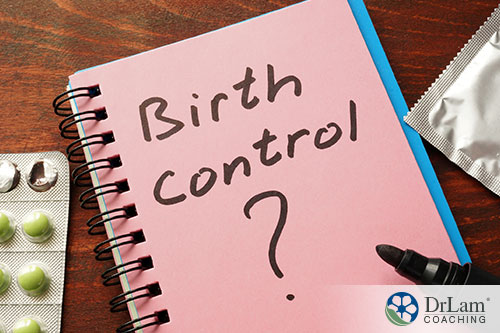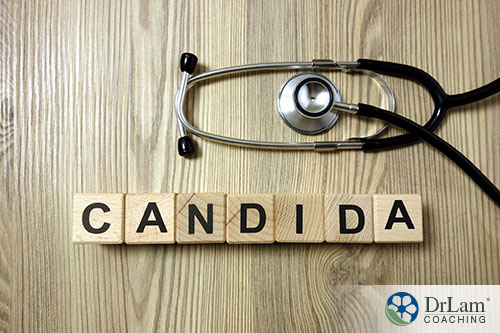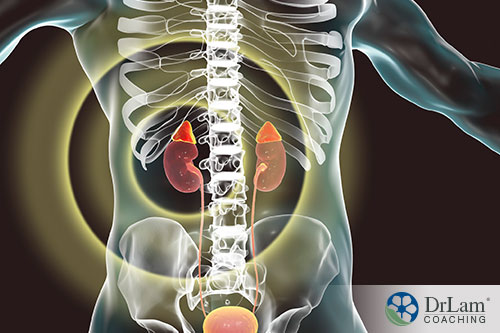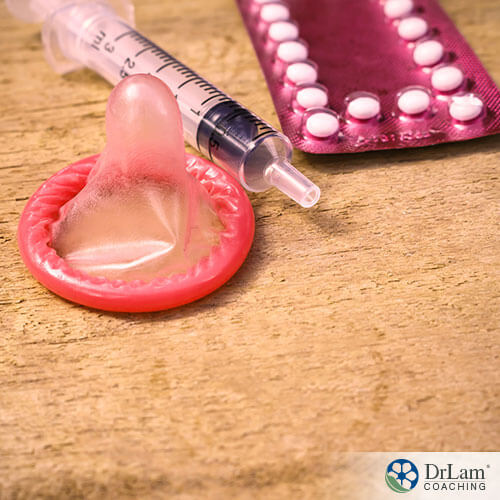
 The Industrial Revolution of the 1800s saw millions of women joining the workforce. These days, many American families have two breadwinners. The cost of living plus improved education have resulted in a workforce that has both sexes. In many cases, having children is not an option, while many women wish to decide when to have children. As a result, many women seek out means to ensure they do not fall pregnant for various reasons. This often requires the use of birth control. What many women may not know about are the birth control risks associated with their contraceptive of choice.
The Industrial Revolution of the 1800s saw millions of women joining the workforce. These days, many American families have two breadwinners. The cost of living plus improved education have resulted in a workforce that has both sexes. In many cases, having children is not an option, while many women wish to decide when to have children. As a result, many women seek out means to ensure they do not fall pregnant for various reasons. This often requires the use of birth control. What many women may not know about are the birth control risks associated with their contraceptive of choice.
Many career women rely on hormonal methods of birth control such as an implant, injectables, the patch, or the pill. These contraceptive measures, which are non-permanent, have a high level of success. Studies claim they work up to 99% of the time when instructions are adhered to. Birth control risks from this type of contraceptive measure include possible weight gain, anxiety, moodiness, and depression, to name but a few. Some women also find it difficult to conceive once they have stopped using contraception.
However, there are also many relatively safe, alternative forms of contraception without the various birth control risks associated with a hormonal contraceptive.
When referring to hormonal birth control you are talking about the use of man-made hormones that copy your body’s natural hormones. There are two types:
Hormonal birth control methods are considered reversible and you should be able to get pregnant after you stop using them. Basically, when using hormonal birth control, you stop ovulation which means there is no egg for fertilization. You may also see a decline in the severity of your period, or it may even stop completely, depending on the hormonal contraceptive you use.
You need to take the combination pill every day at the same time. Each type of pill, depending on its components, releases hormones at specific rates during your cycle. The combination pill contains estrogen and a form of progesterone in varying quantities, depending on the brand.
Birth control risks associated with the combination pill include:
The mini-pill only contains progestin and has fewer side effects than the combination pill and is often given to breastfeeding mothers. You also need to take one each day much like the combination pill. Considered slightly less effective than the combination pill in preventing pregnancies, the mini-pill thickens cervix mucus and makes it difficult for sperm to reach an egg. It also thins your uterus lining, preventing the implantation of a fertilized egg. It may also help prevent ovulation.
 Possible birth control risks include:
Possible birth control risks include:
These hormonal injections slowly release hormones and need repeating every 3 months.
Possible birth control risks include:
The contraceptive implant Nexplanon, inserted into your upper arm, slowly releases progestin. It may provide protection for up to five years.
The birth control risks associated with this implant include, amongst others:
You apply the patch to your skin and replace it every week for three weeks. You take a break during the fourth week when you menstruate. It contains a combination of slow-releasing hormones.
Birth control risks associated with the patch include an increased risk of various health issues like:
The NuvaRing is a vaginal insertion that slowly releases a combination of hormones for a period of three weeks. You take it out in the fourth week. It works much like the patch.
Although rare, birth control risks associated with this type of contraception include an increased risk of:
 IUD devices like the Mirena and Skyla both make use of hormones. While both are inserted into your uterus to prevent pregnancy, there are marked differences.
IUD devices like the Mirena and Skyla both make use of hormones. While both are inserted into your uterus to prevent pregnancy, there are marked differences.
The Mirena is effective for five years and slowly releases the progestin hormone levonorgestrel. It may also help reduce heavy menstrual flows.
The Skyla, often referred to as the mini IUD, lasts for about three years and releases the progestin hormone levonorgestrel. It is smaller than the Mirena, is easier and less painful to insert, and can be used by teenagers and women who have never given birth.
The various birth control risks associated with hormonal IUDs include, amongst others:
The various symptoms or risks mentioned above result from the action of the hormones and actions of the various forms of hormonal contraception.
Using a hormone contraceptive may encourage estrogen dominance, also called a hormonal imbalance, which is linked to yeast overgrowth. In other words, you stand a higher risk of contracting or worsening a candida infection. Besides a vaginal infection, other symptoms of a candida infection include fibromyalgia, psoriasis, digestive disorders, PMS, and depression.
Women using hormonal methods of birth control stand a chance of suffering from nutritional deficiencies in the long term. This is because, in order to metabolize these hormones, your liver uses certain vitamins and minerals like zinc, magnesium, vitamin C, and B-complex vitamins. Gut health also stands a chance of deteriorating. This, in turn, may cause a series of side effects that include digestive issues, fatigue, and even a hormonal imbalance.
Studies strongly suggest that mental health issues are some of the major birth control risks associated with hormonal contraceptives. Amongst these health issues are included moodiness, anxiety, and depression. Many also experience lower libido, feelings of sadness, disinterest, and helplessness. These symptoms could occur because the hormones in these contraceptives can cause a hormonal imbalance.
A possibility exists that using hormonal contraceptives before having your first child increases your susceptibility to breast cancer, according to a study done in Pennsylvania. The reasoning behind this is that while these hormones may deter your chances of getting pregnant, they may overstimulate breast cells and cause cancer. Your chances of this health issue may increase with a family history of the disease.
Much published literature shows a strong correlation between blood clot formation and an increase in estrogen. If these blood clots form in a deep vein, it is referred to as a deep vein thrombosis. If for whatever reason, it breaks loose and travels through your lungs, you have a pulmonary embolism which, in up to 15 percent of incidents, results in death.
 Three of the most important hormone-producing organs in a woman’s body are the ovaries, adrenal glands, and the thyroid gland. They form part of your endocrine system and make up the OAT axis. Control of your adrenal glands and ovaries start in your hypothalamus which makes up part of the Hypothalamic-Pituitary-Adrenal (HPA) axis. In so doing, your OAT axis, with the guidance of your HPA axis, controls the production of many hormones that affect many parts and functions in your body.
Three of the most important hormone-producing organs in a woman’s body are the ovaries, adrenal glands, and the thyroid gland. They form part of your endocrine system and make up the OAT axis. Control of your adrenal glands and ovaries start in your hypothalamus which makes up part of the Hypothalamic-Pituitary-Adrenal (HPA) axis. In so doing, your OAT axis, with the guidance of your HPA axis, controls the production of many hormones that affect many parts and functions in your body.
Now, when one part of your hormone circuit is affected, it causes a cascading reaction throughout your body.
Stress, for example, causes an instantaneous response in your HPA axis, starting with the hypothalamus that sends chemical messengers to the other components of your HPA which, in turn, send their own messengers to your end organs and glands. This response, referred to as the NeuroEndoMetabolic (NEM) Stress Response, sees your adrenals producing increased quantities of cortisol so that your body can cope with the situation. At the same time, other body functions are slowed down or stopped. This includes hormone production.
Long-term stress can thus lead to a marked decline in certain hormones and cause numerous symptoms. Among these, we find not only physiological symptoms like a compromised immune system and digestive issues, but also psychological issues like anxiety and depression. Your reproductive health and function may also become affected.
In the event of an imbalance between your estrogen hormones and progesterone that results in estrogen dominance, a variety of symptoms may manifest. Under normal conditions, the two hormones balance each other. Hormone contraceptives could very well upset this balance. They could also increase your chances of adrenal fatigue or make it worse if already suffering from the condition. In addition, they could make it more difficult to get pregnant later if you decide to.
A hormone imbalance may contribute to a number of health issues. For example, your pancreas activity may suffer and produce less insulin. This, in turn, may result in blood sugar issues that could lead to diabetes.
An imbalance in estrogen and progesterone may lead to such symptoms as impatience, irritability, irregular periods, increased PMS symptoms, fatigue, depression, and swelling. It may also affect thyroid health and lead to thyroid issues. With low thyroid function comes such issues as fatigue, dry skin, thinning hair, weight gain, anxiety, depression, high cholesterol, heart issues, and many more.
These symptoms, and many more, may be linked to birth control risks.
One alternative to the above hormonal methods of birth control is a non-hormonal, copper IUD. This type of IUD relies on copper instead of hormones to prevent pregnancy. The birth control risks associated with this type of IUD include severe premenstrual cramps, heavy bleeding, and spotting between periods. You may also be more likely to expel this type of IUD if you have never been pregnant or suffer from heavy menstrual cramps.
There are also several more natural alternatives to consider.
 There are several surprisingly effective natural birth control alternatives, although they may take a bit of discipline on your part. Keep in mind that these methods are not going to be 99% effective like birth control, but they are quite effective if done correctly. However, there will always be a higher risk of becoming pregnant with the following natural alternatives.
There are several surprisingly effective natural birth control alternatives, although they may take a bit of discipline on your part. Keep in mind that these methods are not going to be 99% effective like birth control, but they are quite effective if done correctly. However, there will always be a higher risk of becoming pregnant with the following natural alternatives.
There are two types of condoms, those for either males or females.
The male condom is the one most of us are familiar with. It is 98% effective when used correctly, making them almost as safe as using hormone contraceptives, and, more particularly, the combination pill.
Female condoms are relatively new on the scene with a 95% effectiveness rate. The condom itself is a small pouch that you insert into the vagina before having sex, thereby preventing sperm from fertilizing the egg. It is less likely to tear than a male condom.
This method requires you to track your fertility quite carefully and not have sex during the week of ovulation. This method has an approximate 75% success rate and is best used when combined with the mucus method and temperature method.
The success of this method relies on women keeping track of vaginal mucus texture and quantity. Your vaginal discharge reflects your body’s estrogen levels. You should have no discharge the first few days directly after menstruation. As your estrogen levels start to rise, however, you may notice a tacky mucus. As your ovulation date nears, you will notice your discharge becomes clear and stringy. You should probably not have sex during this time if you do not want to become pregnant.
Your body temperature rises immediately after ovulation. For this method to succeed, you would need to take your temperature each morning immediately upon waking up. You need to use an accurate basal thermometer to do so. You then need to do this for a few months in order to establish your most fertile days and abstain from sex during this period. Do keep in mind, though, that how much sleep you have had and other issues may interfere with your readings. This method is best used in conjunction with the rhythm and mucus methods of contraception.
Some physicians will prescribe 100-200mg of natural progesterone orally or 20mg progesterone cream topically on days 7-28 of the cycle to prevent ovulation, which usually happens around days 7-15. However, understand that this method is not fool-proof and should be combined with the other forms of natural birth control.
Dealing with birth control risks may often focus on the symptoms instead of the cause, for example, a hormonal imbalance resulting from hormonal contraception.
If you have symptoms relating to birth control risks, here a few things to consider that may help with the issue.
Whatever course of action you choose regarding contraception, please do so with the guidance of your healthcare practitioner who can best explain the pros, cons, and effectiveness of each.
If you would like to know more about the various birth control risks and possible alternatives, the team at Dr. Lam Coaching can help. We offer a free** no-obligation phone consultation at +1 (626) 571-1234 where we will privately discuss your fears and options. You can also send us a question through our Ask The Doctor system by clicking here.

P-Balance Cream: Your Natural Hormone Harmony Solution!
The various hormonal birth control risks could indeed compromise adrenal function. This is because the increase in hormones could disrupt your Hormone circuit and, in so doing, have a negative impact on adrenal health. If this happens to you, please consult your physician and discuss alternative contraception methods.